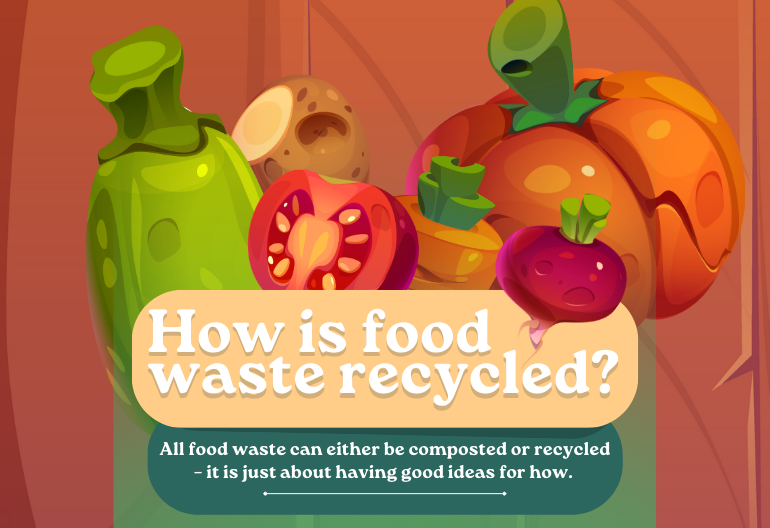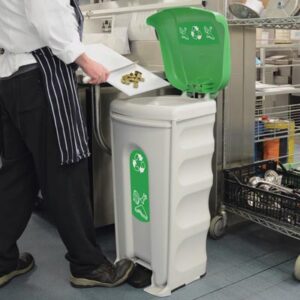
Step 1 – Food Waste Bins
Dedicated bins are vital to improving food waste collection rates. But what should you consider when choosing the right type of bin for food waste or other biodegradable waste?Capacity
The size of the bin and the capacity you need will depend on the location or type of operation and the amount of food waste created. Selecting the right capacity can really help improve collection rates while presenting an opportunity to decrease collection costs. But, with capacities of 30 to 1280 litres, how do you know which size to choose?Internal Facilities
For small offices or establishments, a smaller collection bin may be ideal. Suitable for workplaces and offices, the Nexus® 30 Food Waste Recycling Bin is contemporary, compact, and brightly coloured to encourage efficient waste sorting. With a wide opening, the bin enables the non-contact disposal of food. A foot pedal bin with a lid may be more suitable for commercial kitchens. With a 60 litre capacity and lightweight structure, the Nexus® Shuttle Food Waste Recycling Bin minimises the possibility of cross-contamination, locks in potential odours and lowers the potential for moving and handling problems.External Locations
For external placing in high traffic areas, a larger, 1280 litre capacity bin is a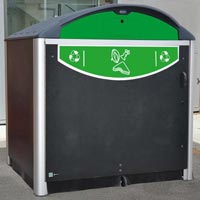 better match. Suitable for picnic areas, apartment buildings, retail establishments and office courtyards, the Modus™ 1280 Food Waste Recycling Housing features a closing valve to minimise odours and repel insects. Obtaining a food waste bin with a capacity that matches the disposal requirements of the user has many benefits:
better match. Suitable for picnic areas, apartment buildings, retail establishments and office courtyards, the Modus™ 1280 Food Waste Recycling Housing features a closing valve to minimise odours and repel insects. Obtaining a food waste bin with a capacity that matches the disposal requirements of the user has many benefits:- By reducing the possibility of overfilling, the collection efficiency of food waste increases.
- Costs decrease as the requirement for frequent collections lessens.
Accessibility and Placement
Often overlooked, the placement and accessibility of food waste bins are important elements of improving food waste recycling rates. The placement of a food waste bin should be within adequate distance of an eatery or area where food consumption occurs to ensure the correct and easy disposal of waste.Apertures and Lids
Minimising the possibility of cross-contamination and rejected waste, apertures encourage users to dispose of waste correctly by providing specific openings suitable for food waste bins. With multiple colours available, the apertures help differentiate between waste sorting containers while allowing for easy identification between streams.
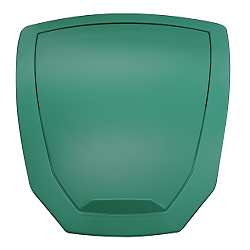
Step 2 – Education
Because collection capabilities and treatment processes vary by area, education is a vital part of improving food waste recycling rates. By providing up-to-date information, explaining the treatment processes, and motivating and encouraging people to collect their food waste, education and awareness can bridge the gap between confusion and success.Create Posters and Infographics
Posters and infographics are handy tools to highlight the methods, benefits, and government requirements of collecting biowaste. By visualising expectations and obligations, posters and infographics provide clear and informative guidance and remove any confusion surrounding waste sorting.Discuss Food Waste Recycling Initiative with Users
Discussing food waste recycling expectations and targets with users creates a two-way communication that can highlight downfalls, issues, successes, and suggestions to optimise initiatives.
Organise Training
Initiating and organising recycling training for users lessens the probability of cross-contamination and heightens the efficiency of recycling schemes.
Step 3 – Graphics and Signage
Graphics and signage make a positive difference to the success of food waste recycling rates. With the ability to highlight the function of a food waste bin and reinforce public or company messaging, additional signage allows for easy identification of recycling points and encourages the correct disposal of waste.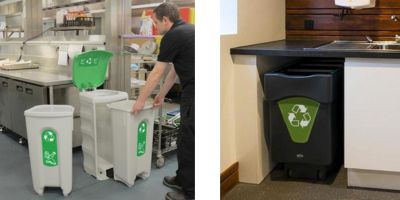
Step 4 – Measure and Monitor Success
Measuring and monitoring a food waste recycling scheme will provide an insight into the successes and downfalls of the initiative and highlight areas for improvement. Regular monitoring via spot check will also encourage users to sort their food waste at the source.Click here to view our food waste bins
References
*https://wrap.org.uk/taking-action/food-drink/actions/action-on-food-waste/
